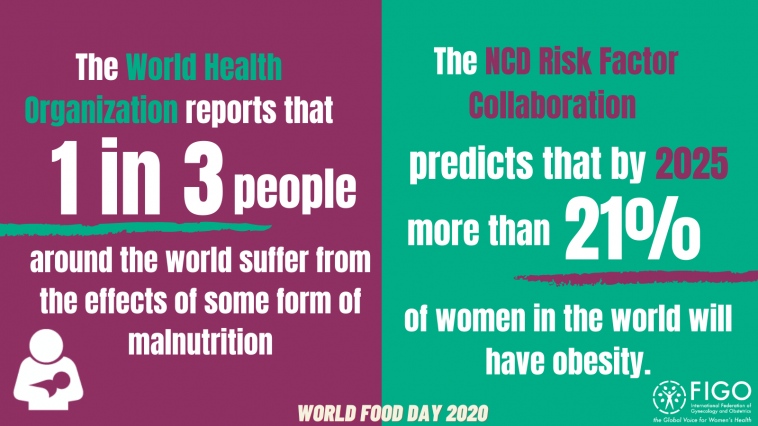The FIGO Nutrition Checklist

The FIGO Nutrition Checklist is a brief nutritional questionnaire, developed in 2015 by the FIGO Initiative on Adolescent, Preconception and Maternal Nutrition. FIGO hosted a webinar introducing and explaining the checklist to attendees from around the globe.
This article is part of our new ongoing webinar summary series, aimed at providing information on all of the key points touched on at our webinars, available to disseminate widely. You can find the video recording to this webinar over on the dedicated website page.
Ms. Sarah Louise Killeen introduced the FIGO Nutrition Checklist and outlined key findings from the acceptability, feasibility and validity studies, published in the PONI Special Supplement in the International Journal of Gynecology and Obstetrics.
The FIGO Nutrition Checklist consists of four sections, with questions on specific dietary requirements, body mass index, diet quality and micronutrients. The aim of these questions is to collect baseline information on weight and nutritional status that can inform health promoting conversations before or during pregnancy and identify nutritional issues that may require further assessment or intervention.
Killeen et al piloted the FIGO Nutrition Checklist with 105 healthy pregnant women in a general antenatal clinic in Dublin, Ireland. They found that over 80% of women reported at least one out of six dietary practices that could put them at nutritional risk. More concerning was that 16% of these women attending for routine antenatal care reported three or more suboptimal dietary practices. The authors also assessed professional practices around nutrition with three obstetricians and found none of them reported regularly discussing nutrition as standard. They all agreed however, that the FIGO Nutrition Checklist encouraged them to discuss nutrition with women. The feedback from pregnant women was positive as they found the Checklist easy and quick to complete. They also felt better prepared for behaviour change after discussing the checklist with their health care professional. While use of the Checklist was encouraged by most of the women and obstetricians, limited clinic appointment time was identified by both as a potential barrier to widespread implementation.
In Hong Kong, Tsoi et al compared a translated version of the FIGO Nutrition Checklist to a locally validated food frequency questionnaire. They found that questions relating to diet quality in the Checklist related well to the intakes of foods and nutrients as assessed by the food frequency questionnaire. Specially, the question on dairy intake in the FIGO Nutrition Checklist (3iv) correlated with the intake of calcium, milk, and dairy products. Question 3ii of the FIGO Nutrition Checklist, designed to collect information on fruit or vegetables, correlated well with fibre, vitamin C, fruits and vegetable intake. In addition, they developed a diet score for the FIGO Nutrition Checklist from one-six. The score aligned well with other, better established measures of diet quality such as the Dietary Approaches to Stop Hypertension index. Finally, they reported that like in Dublin, the majority (95%) of the 156 healthy pregnant Chinese women who took part in this validation study reported at least one out of six suboptimal dietary practices.
The FIGO Nutrition Checklist is an acceptable, potentially feasible and validated clinical practice tool that can identify the regular consumption of unbalanced diets or other issues relating to nutrition and weight. We encourage doctors, family care physicians, community health workers and other relevant healthcare providers to consider the FIGO Nutrition Checklist and to think nutrition and weight first, at every contact.